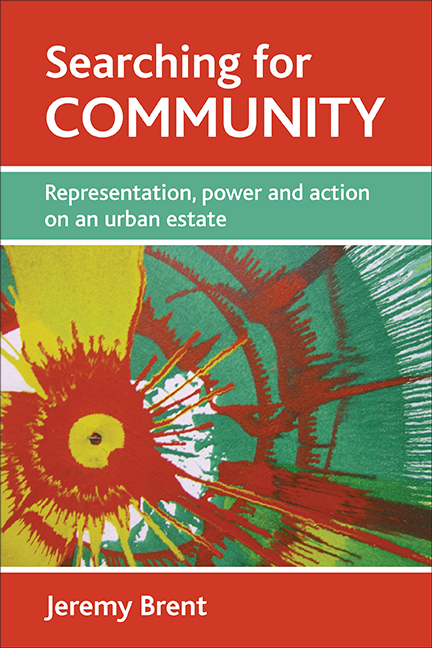Book contents
- Frontmatter
- Contents
- Foreword
- Notes on the author
- Introduction
- one Four settings: contexts and questions
- two Researching Southmead: problems of representation and participation
- three The intelligent outsider? Official and media representations of Southmead
- four Knowledge from within: community art and local representations
- five The outsider within: crossing worlds
- six Young people and community: trouble and tribes
- seven Four examples of community action in Southmead
- eight What is community anyway?
- nine Engaging with community
- ten Communicating what youth work achieves: the smile and the arch
- Author’s acknowledgements
- Epilogue: Southmead eight years on
- Afterword: Why Jeremy Brent’s work is more relevant than ever
- Bibliography
- Index
three - The intelligent outsider? Official and media representations of Southmead
Published online by Cambridge University Press: 22 January 2022
- Frontmatter
- Contents
- Foreword
- Notes on the author
- Introduction
- one Four settings: contexts and questions
- two Researching Southmead: problems of representation and participation
- three The intelligent outsider? Official and media representations of Southmead
- four Knowledge from within: community art and local representations
- five The outsider within: crossing worlds
- six Young people and community: trouble and tribes
- seven Four examples of community action in Southmead
- eight What is community anyway?
- nine Engaging with community
- ten Communicating what youth work achieves: the smile and the arch
- Author’s acknowledgements
- Epilogue: Southmead eight years on
- Afterword: Why Jeremy Brent’s work is more relevant than ever
- Bibliography
- Index
Summary
Introduction
A major theme, an orthodoxy even, is that in the battle of representation that is fought over Southmead there exist very different ‘outsider’ and ‘insider’ knowledges and representations of the area, emanating from standpoints that make this a two-sided battle. The difference between these two standpoints and their representations is used as one of the definitional markers of what Southmead itself is; the idea of ‘out’ and ‘in’ sets up Southmead as a bounded entity.
Throughout the book, the simple but powerful differentiation between inside and outside is questioned, but this cannot be done without first acknowledging how pervasive it is in representations of the area. In this chapter, I will look at official reports, surveys and media coverage of the area; these portrayals are considered as outsider representations of Southmead, both by those who produce them and by those about whom they are produced. The next chapter will look at representations that come from what is seen as inside. This approach to different knowledges of the area is very similar to that of standpoint epistemology developed by feminist and afrocentric thinkers, in which different standpoints of master and subjugated groups, in this case embodied as ‘inside’ and ‘outside’, lead to different, more or less distorted, knowledges. In showing these two ‘sides’, however, I question whether these representations merely reflect two structurally different standpoints, or whether they themselves are intrinsic processes in the construction of those standpoints, which in turn create the object of Southmead. The idea of inside and outside as itself being part of the discursive formation of Southmead will continue to be investigated throughout the two chapters that follow this one. These issues are not unique to Southmead, nor are the types of representation. Looking at how one area becomes an object in representation does not make that area any the more special than the hundreds of other areas subjected to the same process, but does enable us to look at the process in detail.
The Bristol Social Project
By far the largest and most thorough study of Southmead is the action research of the Bristol Social Project, carried out between 1953 and 1958. In some ways, it is comparable to this research of mine; it was concerned with Southmead, with active involvement, with young people and with the idea of community.
- Type
- Chapter
- Information
- Searching for CommunityRepresentation, Power and Action on an Urban Estate, pp. 67 - 96Publisher: Bristol University PressPrint publication year: 2009



